Basil is one of the most popular herbs used in cooking, so it makes sense to have your own supply of delicious, fresh basil at your home.
If you’re planning to grow your own basil, you might be wondering whether or not basil is a perennial plant. Or, at the very least, how can you ensure a fresh supply year-round.
Generally, most basil varieties are perennial plants in their native tropical climates. Yet, they are commonly grown as annual plants throughout temperate regions such as North America.
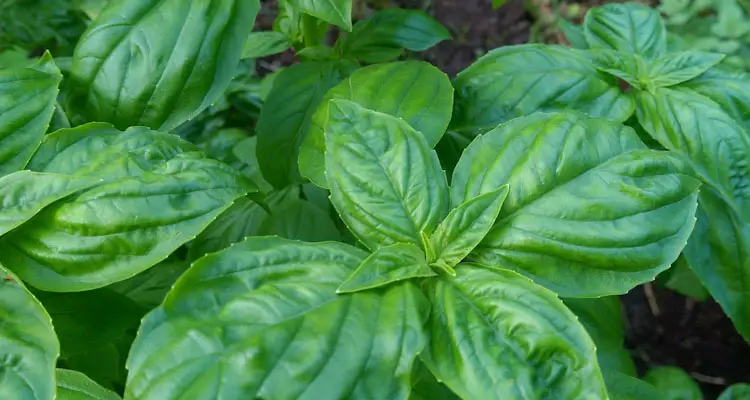
Thankfully there are several ways to extend the lifespan of your basil plants and a simple trick to keep the same plant alive for years.
This article will take a closer look at basil, including tips to grow and care for your plants. However, before we do, I think we need to clarify the term “perennial.”
What Is A Perennial Plant?
In short, a perennial plant can live for more than two years. It is often used to differentiate between plants with shorter life spans, such as biennials and annual plants.
Many of the most popular herbs are perennials, including Rosemary, Spanish Thyme, Mint, and even Sage. As a result, they are popular among chefs and often grown in their kitchens.
Their popularity leads many to assume that basil is also a perennial plant since it is always available. However, this can be tricky, as we’ll see in the next section.
Is Basil A Perennial?
Basil is actually grown as an annual plant in most temperate regions, due in part to the climate. Additionally, the most popular variety, Sweet Basil, is, in fact, an annual plant that dies after producing seeds.
As for the perennial varieties, while they may thrive for years in warm climates, most cannot survive the harsh cold of the winter. As a result, the most common types of basil found in culinary environments are not perennials.
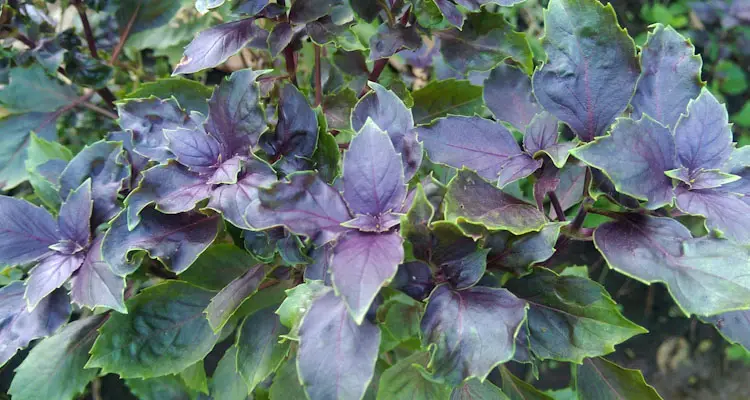
However, this does not mean you cannot have basil year-round. You will just need to put in a little effort. The secret to having an endless supply of fresh basil is to continuously replant it throughout the year, carrying them indoors during cold spells. More on this in the next section.
Ideally, you can propagate cuttings of the same plant or save or purchase seeds or seedlings. Every spring will require some form of a new basil plant!
For example, suppose you start the plant as seedlings in the spring. In that case, you can continue to harvest basil leaves until the summertime, when it begins to warm up, causing the plant to flower and eventually die as the colder weather approaches.
However, if you want to ensure that you have a supply of fresh basil to hand all winter long, there is one method of growing that you can use. I’m sure you already have an idea…
Growing Basil Indoors Year Round
Now, if you live in a colder climate and want access to fresh basil all year round, then all you need to do is grow it indoors, at least during cold spells.
This will ensure that your basil isn’t affected by the winter cold. You can always grow it outside during the warmer months and move it indoors as it gets colder again.
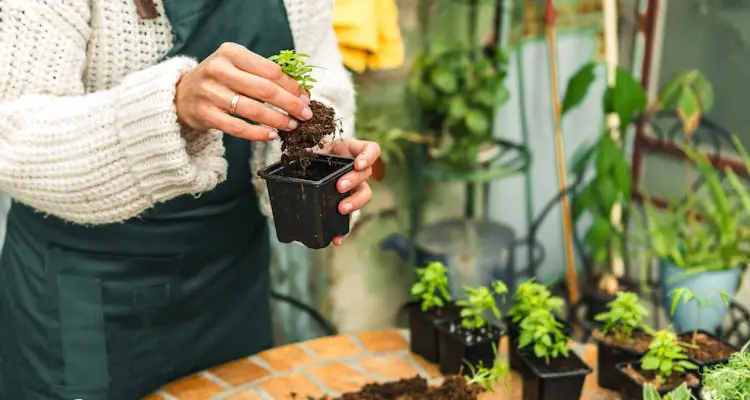
Basil will happily grow and thrive in pots and containers inside your home and typically require an inch of water across a week.
You should also water it deeply weekly to ensure that the soil and roots are moist. Be careful not to overwater during colder seasons.
Growing your basil in a container will need slightly more water during the summer to prevent it from drying out too soon.
You should avoid fertilizing your basil plant too much, if at all, as basil grown in containers are strong and vigorous growers.
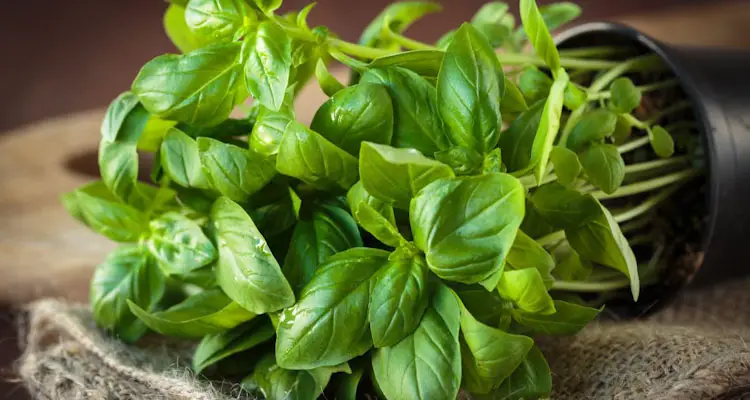
However, if you do choose to add some, you can use some homemade liquid fertilizer every 3 to 4 weeks. Any more than this, and there’s a chance that the fertilizer will affect the taste of your basil!
You can take leaves from your basil plant once two sets of true leaves have arrived. This will ensure that your basil plant grows full and bushy and will ultimately reach its full growth potential.
Harvesting And Storing Basil
As previously mentioned, there isn’t an exact date when you should harvest your basil leaves. As long as the leaves have developed fully, you can begin to take them and add them to your cooking as and when you need them.
You should be sure to remove them even if you don’t need them to stimulate new growth of leaves and discourage the production of flowers. Remember what happens after they produce seeds?
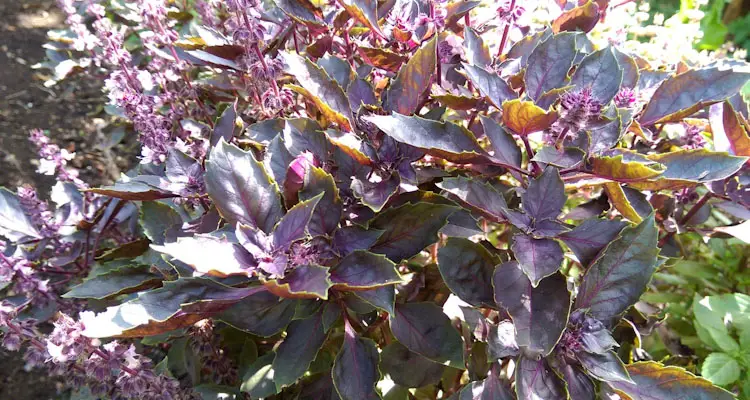
If growing basil indoors is too much hassle for you, there is a way that you can store your basil leaves grown outdoors to use them throughout the colder months too.
All you need to do is harvest the stems and remove each of the leaves from the stem. Then, you want to arrange the leaves into a singular layer and allow them to dry before placing them into an airtight container and the freezer.
Although it is worth noting that you won’t be able to garnish your favorite pasta dish with the basil once you’ve thawed it, as it won’t be as fresh. However, you’ll still be able to use it in your favorite soups and sauces!
Final Thoughts
In short, most varieties of basil are not grown as perennial plants if grown in temperate regions such as North America. This is true even though they typically can thrive in their native climate for years.
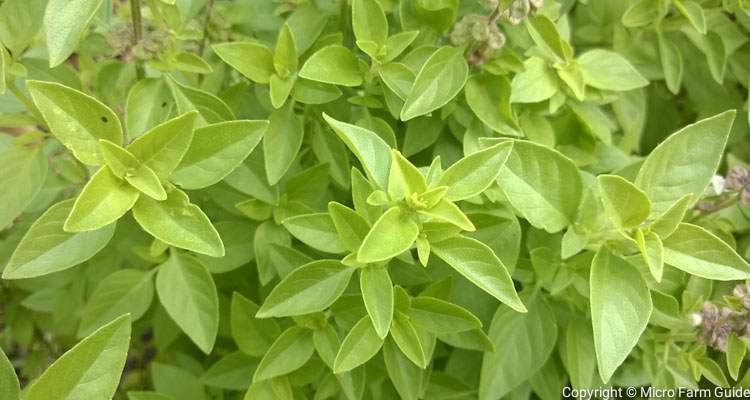
However, there are plenty of ways to grow basil year-round to ensure a continuous fresh supply.
If you’re not too particular about freshness, you can preserve the extra leaves for use when plants are unavailable.
References
Britannica. Basil. britannica.com. Accessed October 2022
New World Encyclopedia. Basil. newworldencyclopedia.org. Accessed October 2022
CABI. Ocimum Gratissimum (African Basil). cabi.org. Accessed October 2022

